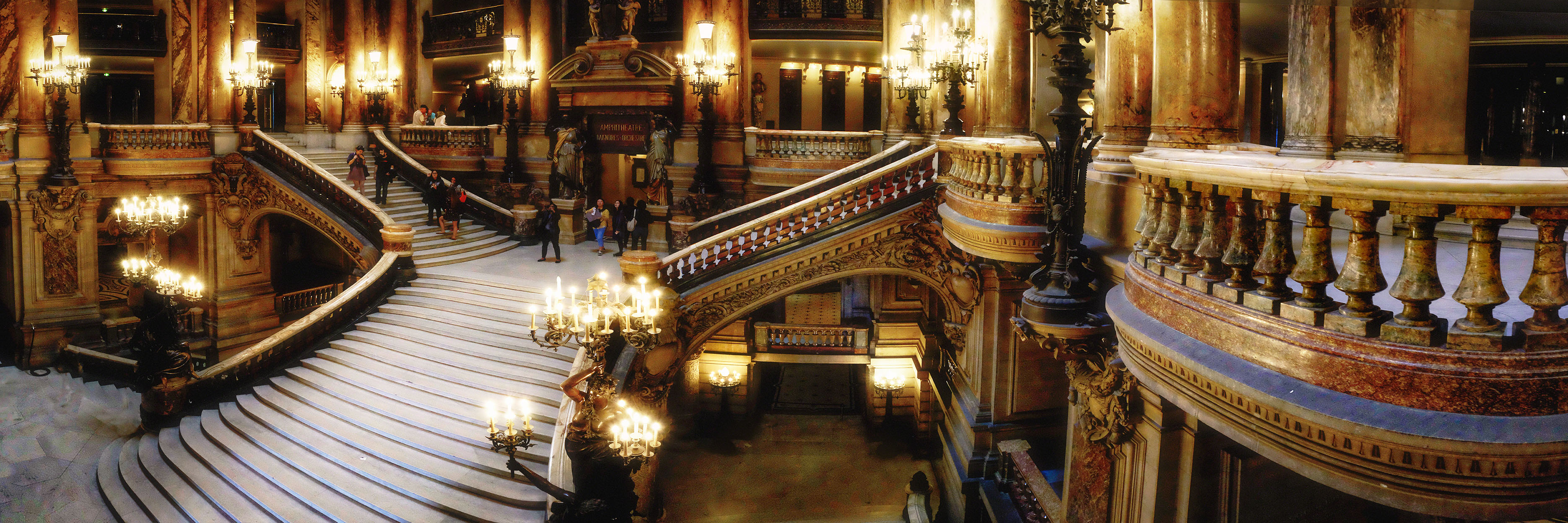

The Paris Opera is a building that is already worth seeing from the outside both during the day to appreciate all the architectural details of this neo-baroque building, and at night when it is one of the most powerful attractions of the illuminated Paris. Opera Garnier Staircase| ©Valerian Guillot This is the case of the Grévin Museum, the wax museum of Paris that houses inside the famous distorted mirrors, the Palais de la Bourse, the neoclassical building in which the economic activity of the city is concentrated, or the specialized stores of truffles, champagne and caviar located in the Place de la Madeleine. If after this tour you are left wanting more, the Opera district still has things to offer. If you like the stories of the French Revolution, this is the moment when your guide will tell you all of them because the square was one of the bloodiest scenes of the time it was the site of the famous guillotine that beheaded personalities such as Marie Antoinette, Louis XVI and Robespierre.

Right now you will see in the center of this square the obelisk of Luxor donated by Egypt to the city of Paris, however, a few centuries ago, what was in its center was a statue of Louis XV erected to celebrate his improvement after a long illness. This is the second largest square in France and is located at the beginning of the Avenue des Champs Elysees. An ideal stop to learn a little more about the role that religion has played in Paris over the centuries and how the affairs of the church could be related to those of Parisian high society. Its 52 Corinthian columns and the bas-reliefs of the bronze doors that show the Ten Commandments stand out. This Greek-style church is one of the most visited in the capital.

Its glass ceilings and the decoration of the establishments that compose it were declared a historical monument of the city. It is one of the most iconic covered galleries in Paris. You will visit them during the tour, but I recommend that you reserve another day to go shopping in the area.
Tour paris opera house full#
Today it houses the Council of State and the Ministry of Culture among other places symbols of the political organization of the country, but its real attraction are the covered galleries full of stores and art galleries. The Royal Palace of Paris was the home of Cardinal Richelieu in the early 17th century. No doubt the guide will take advantage of the first stop of this tour to tell you the mythical story of the Maid of Lorraine. One of the many iconic squares of the French capital, located in the 1st arrondissement of the city and presided over by the equestrian statue of Joan of Arc. During your visit, you can go up to the roof to admire the views of the area get your camera ready.įrom the rooftops of the Galeries Lafayette you will have panoramic views of the entire city and you can enjoy them while they tell you stories related to Parisian high society and the scandals of the nobility. Take note of the location so you can come back later to leisurely stroll through this sort of shopping mall and ask your guide which is the best place to buy original gifts. If you are a shopping lover, this will be one of your paradises. Galeries Lafayette and its rooftop terrace One of the most practical options for getting to know the area is to choose a tour that combines a guided visit to the opera with a walking tour of the surrounding area and a visit to the Palais Royal, located between the Opera and the Tulleries districts. The Paris Opera is a symbol of the lifestyle of affluent Paris, which is reflected in the surroundings of the building and the covered shopping arcades that surround it. Views from the rooftop of the Paris Opera House Take advantage of being in the area of the Opera Granier to take a tour of the luxurious 'passages' and shopping arcades in the area. Of course, I recommend you to take into account the French schedules (lunchtime is usually between 12 and 14 pm and dinners start from 19 pm) and book in advance to avoid waiting. If you want to eat in the neighborhood before or after your visit you will find both simple restaurants and elegant cafes where you can enjoy French food without the crowds of other busier areas of the capital. This is a stately neighborhood ideal for shopping and leisurely strolling without a large influx of tourists and can be reached either by walking from the nearby neighborhoods of the north bank of Paris (the Louvre or the Champs Elysees) or by metro (line 7, line 8 and line 3). The Paris Opera is located in the Quartier de L'Opera, a central district north of the Tuileries Gardens and the Louvre Museum.
Tour paris opera house how to#
Stained glass ceiling of the restaurant of the luxurious Galeries Lafayette, a few meters from the Opera Garnier.| ©Les Corpographes How to get to the Opera


 0 kommentar(er)
0 kommentar(er)
